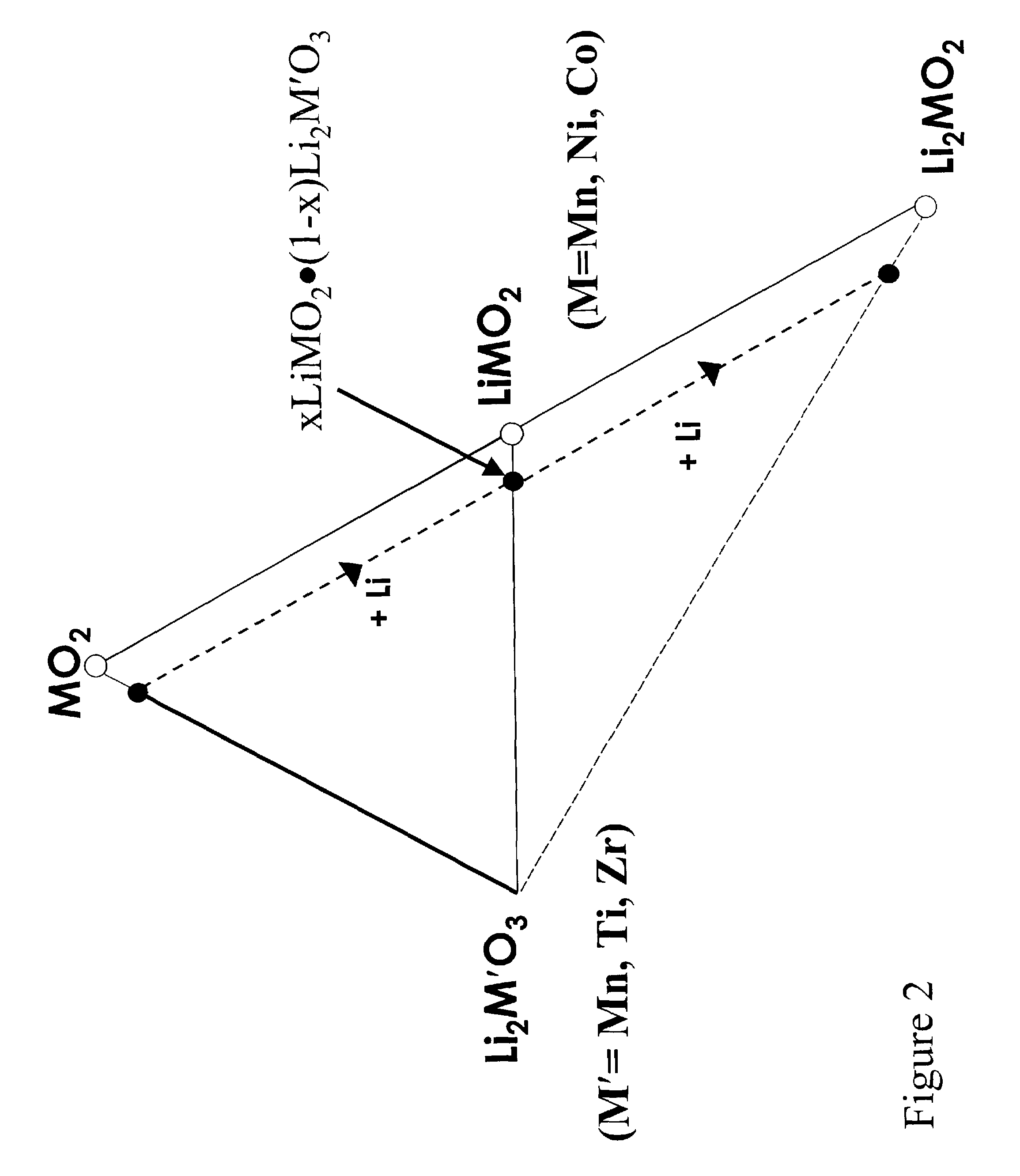Layered electrodes for lithium cells and batteries
- Summary
- Abstract
- Description
- Claims
- Application Information
AI Technical Summary
Benefits of technology
Problems solved by technology
Method used
Image
Examples
example 1
[0048]A Mn0.5Ni0.5(OH)2 reagent was prepared by precipitation from Ni(NO3)2 and Mn(NO3)2 in basic solution (NaOH, pH˜11). The electrode precursor material Li(Mn0.5Ni0.5)O2 was prepared by the reaction of the Mn0.5Ni0.5(OH)2 reagent with LiOH.H2O in the required stoichiometric amounts in pelletized form, first at 480° C. for 12 hours and thereafter at 950° C. for 10 hours. The sample was then quenched in air to room temperature and ground into a powder. The powder X-ray diffraction pattern of the final Li(Mn0.5Ni0.5)O2 product is shown in FIG. 3.
example 2
[0049]The electrode precursor material Li(Li0.02Ti0.05Ni0.46Mn0.46)O2 that can be written, alternatively, as 0.05Li2TiO3.0.95LiNi0.5Mn0.5O2 was prepared by the reaction of Ni0.5Mn0.5(OH)2 and Ti[OCH(CH3)2]4 in the required stoichiometric amounts, together with a slight molar excess of LiOH (typically 3%) at 900° C. in air for 20 hours or less. The powder X-ray diffraction pattern of this compound, shown in FIG. 4, indicates an essentially single-phase product with a layered-type structure.
example 3
[0050]A Li(Li0.02Ti0.05Ni0.46Mn0.46)O2 product from Example 2 was reacted with a five-fold excess of n-butyl-lithium at 50° C. under nitrogen for three days. The X-ray diffraction pattern of the two-phase product consisting of unreacted Li(Li0.02Ti0.05Ni0.46Mn0.46)O2 and a Li1+δ(Li0.02Ti0.05Ni0.46Mn0.46)O2 (δ≈1) product is shown in FIG. 5, the Li1+δ(Li0.02Ti0.05Ni0.46Mn0.46)O2 (d)>>1) product being in accordance with the principles of this invention. The relatively low concentration of the lithiated Li1+d(Li0.02Ti0.05Ni0.46Mn0.46)O2 phase in the sample was attributed to its high reactivity and its fast rate of decomposition when exposed briefly to air during the X-ray data collection.
PUM
 Login to View More
Login to View More Abstract
Description
Claims
Application Information
 Login to View More
Login to View More - R&D
- Intellectual Property
- Life Sciences
- Materials
- Tech Scout
- Unparalleled Data Quality
- Higher Quality Content
- 60% Fewer Hallucinations
Browse by: Latest US Patents, China's latest patents, Technical Efficacy Thesaurus, Application Domain, Technology Topic, Popular Technical Reports.
© 2025 PatSnap. All rights reserved.Legal|Privacy policy|Modern Slavery Act Transparency Statement|Sitemap|About US| Contact US: help@patsnap.com



